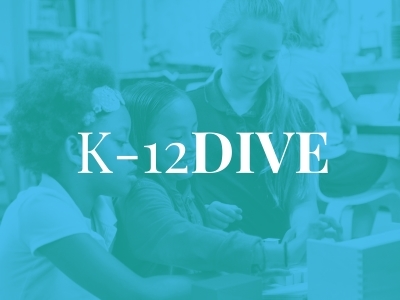Why Schools Need to Change. Really.
Topics

Today’s learners face an uncertain present and a rapidly changing future that demand far different skills and knowledge than were needed in the 20th century. We also know so much more about enabling deep, powerful learning than we ever did before. Our collective future depends on how well young people prepare for the challenges and opportunities of 21st-century life.
Trends in employment, learning, and opportunity call for substantial changes in schooling. What can educators do?
This post originally appeared on the Learning Deeply blog on Education Week.
We’ve moved from the industrial age to the information age.
Technology is transforming the ways we work and live.
Globalization is shifting the types of jobs available in the U.S.
The gig economy is here to stay.
The world is changing, no doubt. But do we really understand these changes and their impact on the lives of students?
With the MyWays project, Next Generation Learning Challenges researched this topic extensively, looking at trends in employment, postsecondary education, social changes that lead to a widening opportunity gap, and new understandings of adolescent development and the role of social capital. The research is available in Part A of the MyWays Student Success Series, “Adolescence in an Age of Accelerations.”
The trends in employment, learning, and opportunity in the U.S., like the ones highlighted in this post, are sobering. It’s a complicated and risky world, but one that is filled with possibilities if young people are prepared for it.
Changes in Employment
Disappearing entry-level jobs: Technology and automation are affecting the nature of all kinds of jobs, and the MyWays research revealed that, combined with outsourcing, these forces are actually squeezing out the very jobs in which young people typically get their start.
Middle-skill jobs, like brokers, tellers, travel agents, and technicians as well as junior-level jobs in professions like law, radiology, and computer science, are increasingly harder to find, declining from 58 percent to 44 percent of all jobs over the last 30 years. In The Second Machine Age, Erik Brynjolfsson and Andrew McAfee refer to this trend as a “gale of creative destruction” that is most impactful on young people, particularly those with the least means and greatest vulnerability.
Experience required: Research like that of Peter Cappelli in Will College Pay Off? concludes that employers today are less likely to hire for potential and more likely to hire for experience. Employers are not spending as much on talent development and on-the-job training as they used to and are more likely to invest in technology solutions and contract labor. The catch-22, “I need experience to get my first job; but I need someone to hire me to get experience” is all too real for today’s young people.
In a trend of tight competition for scarce jobs, even if a job does not require a college degree, the growing number of unemployed and underemployed college graduates edge out high school graduates for those jobs. As Derek Thompson noted in an article in The Atlantic, “In the biggest picture, the job market appears to be requiring more and more preparation for a lower and lower starting wage.” It leaves college graduates underemployed and those with less education with even fewer options.
Given these changes in employment, young people are faced with the daunting task of figuring out how to enter the world of work after high school and college with both training and experience already on their resume.
Changes in Learning
College is not a stepping stone: The costs of postsecondary learning are rising, financial aid is harder to find, and the potential earnings from jobs after graduation are dropping. This makes college an expensive investment with uncertain returns. It’s the most well-known secret that the traditional college experience—high school graduates completing community college in two years or a bachelor’s degree in four years—is the exception not the norm. See, for example, Learning While Earning, a report from the Georgetown Center on Education and the Workforce. Most students pursuing postsecondary education are older; are taking longer to get to a degree, if they earn one at all; and are working while learning, often in low-paying jobs that are not relevant to their chosen major or career prospects.
New skills needed to navigate life after high school: Preparing for success in the journey from high school to an early career is much more complicated than ever before. In the MyWays research, NGLC dubbed the decade after high school as the wayfinding decade, because it requires a new kind of agility, navigation, and perseverance. Those aren’t the only new skills young people need: entry-level jobs require new, higher skills, like critical thinking, communication, collaboration, and creativity and more technical skills like coding.
Unfortunately, the uncertainty of the wayfinding decade doesn’t dissipate. Throughout their lifespan, today’s youth will see ongoing change in the availability of jobs, the required training and experience needed to be hired, and the necessary skills to perform those jobs. Did You Know? is a short video about these changes, with compelling statistics like, “The amount of new technical information is doubling every 2 years…. For students starting a technical degree this means that half of what they learn in their first year of study will be outdated by their third year of study.” Young people need to adapt quickly and regularly develop new skills in order to create a career over a lifetime. Lifelong learning is a necessity.
Given these changes in learning, young people are faced with the daunting task of figuring out how to develop knowledge, skills, and abilities for multiple jobs—jobs that may not even yet exist—in a more expensive and more confusing postsecondary learning landscape.
Changes in Opportunity
Income defines generations: A prevailing myth in U.S. culture is that if you try hard, regardless of where you came from, you can be successful. But the shifts in technology and the economy discussed above, with roots back to the 1970s, are changing the deal: it is getting harder and harder to move out of poverty. Disappearing middle-skills jobs, the high-cost and low success rates in postsecondary education, and increasing social segregation by race and class are decreasing economic and social mobility. The Great Recession exacerbated these trends, and in spite of a generally rebounding economy the gaps are only getting wider.
Education and employment trends combine to widen the gaps: High school graduation rates for students of color are rising and though they still lag behind their white peers, trends show this opportunity gap is narrowing. But it’s not making much of a difference. The unemployment rate for high school graduates of color has been over 20 percent since the Great Recession. And while more students of color are going to college, college graduates are more likely to be white and affluent. White and affluent college graduates are more likely to be employed, with unemployment rates half that of black and Hispanic college graduates. The result is greater stratification—a gulf of opportunity—between the haves and the have nots.
Given these changes in opportunity, young people of color and young people from low-income families are faced with the daunting task of figuring out how to combat systemic barriers that are making it increasingly more difficult to succeed.
What Educators Can Do
Redefine Student Success: To address the new skills young people need to navigate postsecondary learning and employment in today’s world, educators can work with their communities to rethink and update the skills and knowledge required for graduation. The changes in employment, learning, and opportunity suggest many deeper learning competencies that are already understood to be important, competencies like problem-solving and critical thinking. The trends also suggest some new ones, like those in the MyWays Wayfinding Abilities domain.
Connect Young People to the World of Work: To address the need for practical work experience and training, educators can provide more robust learning experiences that better connect classroom learning with the real world of adults. There are many ways to do this. MyWays offers several research-based learning designs that connect adolescents to the adult world, particularly through Whole Learning and the Wider Learning Ecosystem.
Drive the Changing World Toward Equity: Responding to the changing world is a big step for K-12 education, a system known more for its stability than its agility. But what if K-12 became a driver of change in its local communities? The forces contributing to the gaps in opportunity are bigger than K-12 can address on its own. Responding to the trends by helping the most vulnerable students navigate the inequities—through learning experiences focused on broader, deeper competencies—won’t break the systems that create advantages and disadvantages to begin with. How might K-12 co-create a thriving, equitable community and build the kind of future we all want for our young people?




